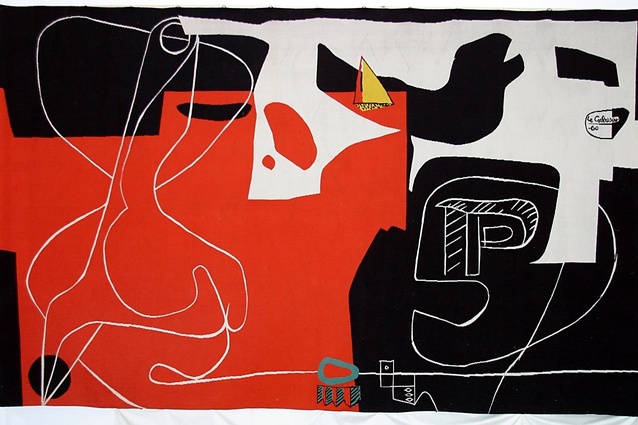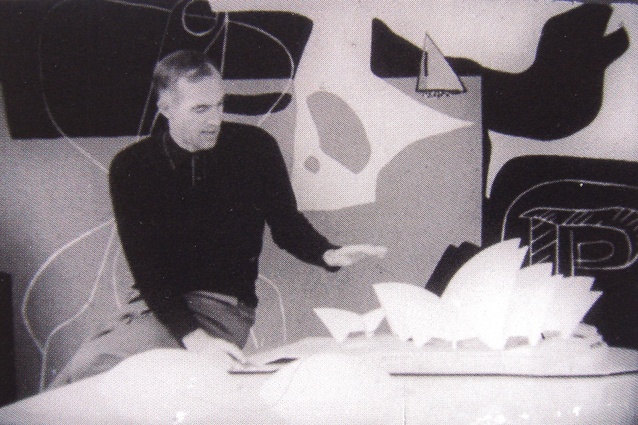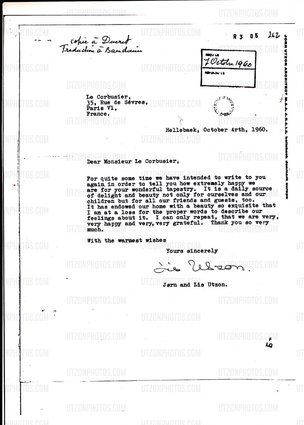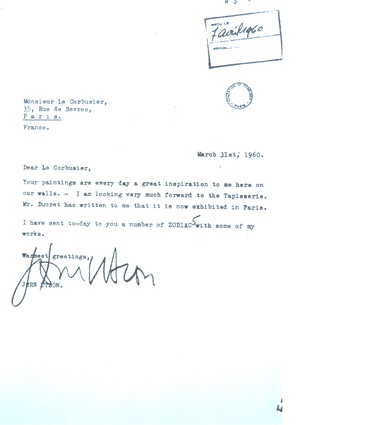Corb’s lost tapestry comes ‘home’ to Sydney Opera House
Le Corbusier’s little known tapestry commissioned by Jørn Utzon for the Sydney Opera House will finally be installed in its intended place. The Sydney Opera House acquired the tapestry with the help of philanthropists at an auction in Copenhagen on 9 June, 2015.
The 6.5-square-metre wool tapestry Les Dés Sont Jetés (“The Dice Are Cast”) was commissioned in 1958, one year after Utzon famously won the international design competition for the Sydney Opera House. It features visual reference to the site as well as topographical and cultural references.
“The graphical sign positioned in the bottom right of the tapestry – white lines on a black ground appearing to represent a crying face and, simultaneously, the letter ‘P’ – appears to be produced by tracing over the competition issue site plan of Bennelong Point.” described University of Queensland Professor Antony Moulis. “The graphic outline forming the centre of the ‘P’ is in fact an outline of the distinctive plan footprint of the tram depot previously housed on Bennelong Point.”
Utzon wrote to Le Corbusier, whom he had much admired, in 1958, with a request for a piece of “decoration, carpet and painting” for the Sydney Opera House. He also enclosed drawings of his competition winning design. The two architects met in Paris in 1959 to discuss the proposal and the tapestry was completed and delivered to Utzon in 1960, where it hung in Utzon’s own house in Hellebæk, Denmark which he designed (1950–52).
Utzon’s wife Lis wrote to Le Corbusier in 1960 thanking him for the tapestry: “It is a daily source of delight and beauty not only for ourselves and our children but for all our friends and guests, too. It has endowed our home with a beauty so exquisite that I am at a loss for the proper words to describe our feelings about it.”
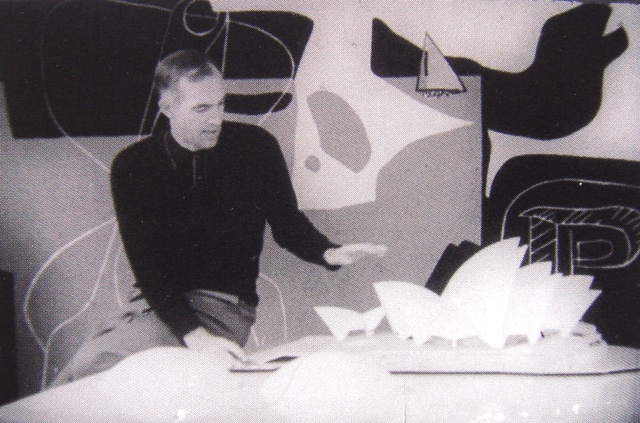
In 1966, Utzon left Australia and the Sydney Opera House project after butting heads with the then NSW Government and the tapestry was unfortunately never installed in the Opera House, which was opened in 1973. The tapestry has remained at the Utzon house ever since, until now.
The acquisition will “enable us to incorporate this vital piece of the Opera House’s heritage back into the building as we work to renew it,” said Sydney Opera House CEO Louise Herron AM. Since 1999, the Sydney Opera House Trust has been working with Jørn Utzon and his son Jan, who is also an architect, on reinstating the building as Utzon intended.
The tapestry represents Le Corbusier’s interpretation of Utzon’s original designs for the Opera House interior.
“My father greatly admired Le Corbusier and they engaged and collaborated deeply,” said Jan Utzon. “Le Corbusier incorporated the city and architectural details of the planned Opera House into his composition. It belongs in Sydney.”
Utzon completed his own tapestry, Homage to CPE Bach, which was installed in Utzon room in 2004, 31 years after the Opera House opened.

